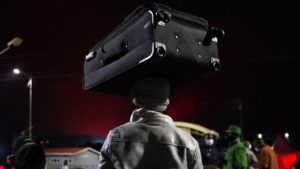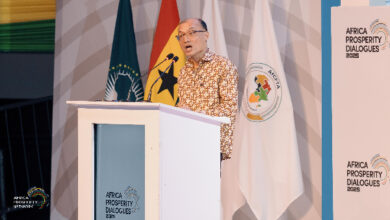Mount Nyiragongo: DR Congo residents flee as volcano erupts
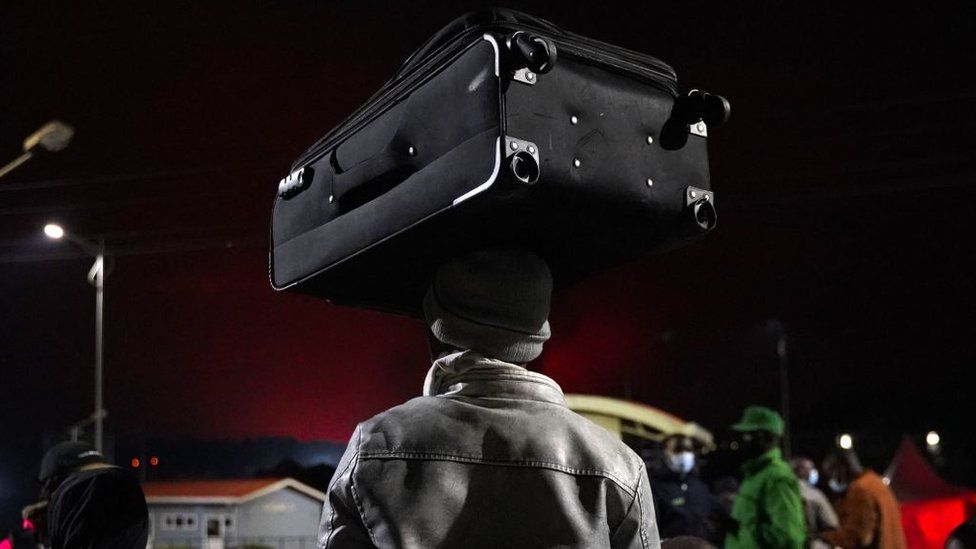
As the sky turned red and rivers of lava streamed from Mount Nyiragongo, there were concerns that its past deadly tragedies would be repeated.
A mass evacuation was launched in the city of Goma, which has a population of about two million people.
However, the city was largely spared and some residents are now returning.
The volcano, located 10km (six miles) from Goma, last erupted in 2002, killing 250 people and making 120,000 homeless.
There has been no official report of casualties during the latest eruption and it is unclear how many homes have been damaged.
On Sunday morning, Communications Minister Patrick Muyay tweeted to say the intensity of the lava flow had slowed and an assessment of the humanitarian situation was ongoing.
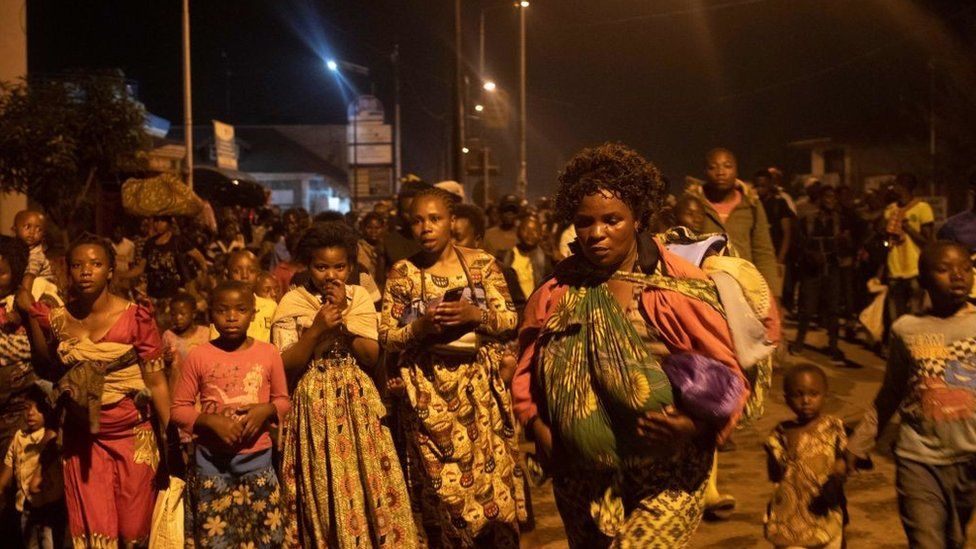 IMAGE COPYRIGHTGETTY IMAGES
IMAGE COPYRIGHTGETTY IMAGESThe BBC’s Emery Makumeno in DR Congo’s capital Kinshasa said a greater quantity of the lava took the direction of the forest, flowing away from the city.
Our reporter said it stopped short of the international airport, despite earlier reports to the contrary. However, it did set some houses on fire and crossed a graveyard.
One resident, Zacharie Paluku, told the Associated Press news agency that the eruption had sparked fear and people began running. “We really don’t know what to do,” he said.
Some locals complained about the lack of information from the authorities amid conflicting accounts circulating on social media.
Crowds were seen with mattresses and other belongings, fleeing even before the government’s announcement, which came several hours after the eruption started.
Many residents headed across the nearby Rwandan border, while others went to higher ground to the west of the city.
Rwandan authorities said about 3,000 people had officially crossed from Goma. The country’s state media said they would be accommodated in schools and places of worship.
One Goma resident, Richard Bahati, said he was in his house when he heard screaming. “I got out and saw the sky was red. I am so worried, so worried. I lived through the problem with this volcano in 2002. The volcano devastated all our homes and possessions.”
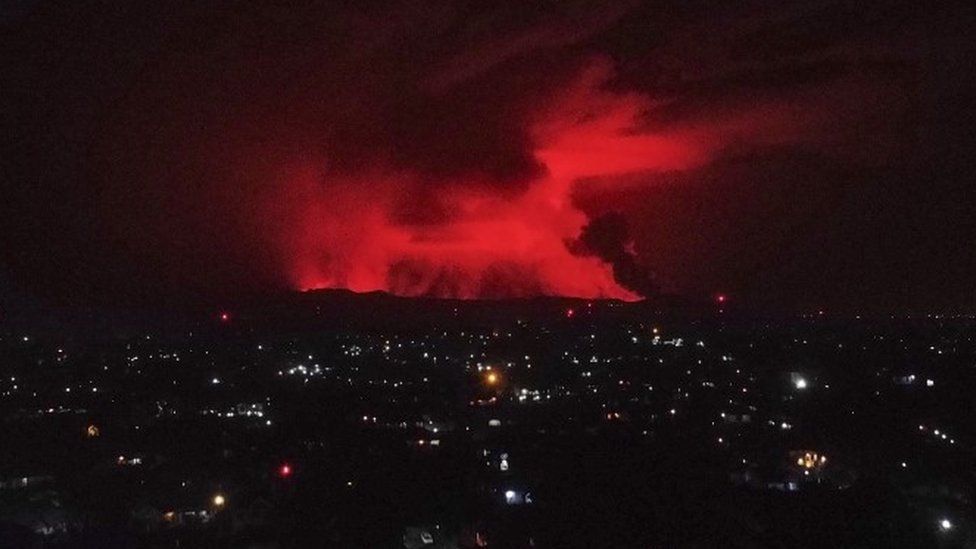 IMAGE COPYRIGHTEPA
IMAGE COPYRIGHTEPA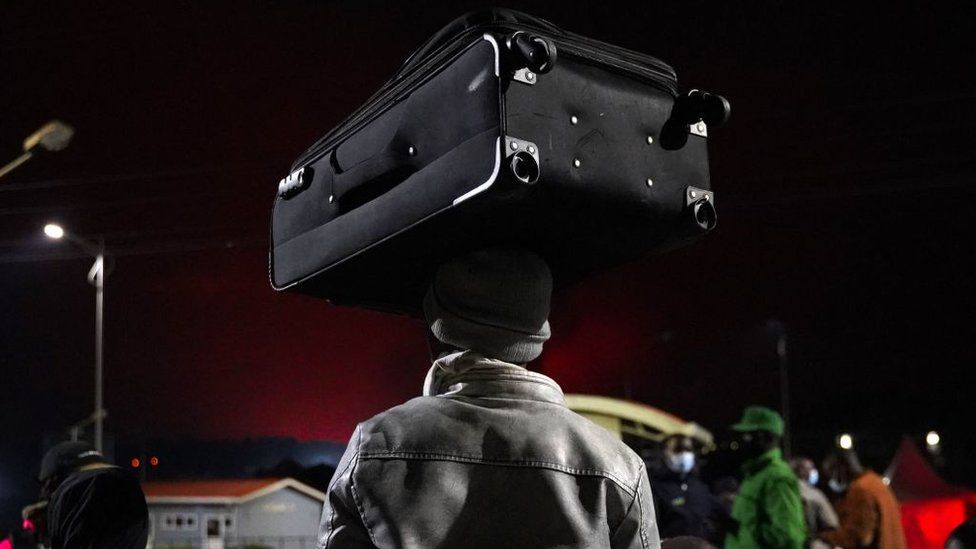 IMAGE COPYRIGHTGETTY IMAGES
IMAGE COPYRIGHTGETTY IMAGESElectricity was out across large areas in the aftermath of the eruption.
“There is a smell of sulphur. In the distance you can see giant flames coming out of the mountain,” resident Carine Mbala told AFP news agency.
Mount Nyiragongo is one of the world’s more active volcanoes but there were concerns that its activity had not been properly observed by the Goma Volcano Observatory, since the World Bank cut funding amid allegations of corruption.
In a report on 10 May, the observatory warned that seismic activity at Nyiragongo had increased.
Last year, the observatory’s director, Katcho Karume, told the BBC World Service’s Science in Action that the volcano’s lava lake had been filling up quickly, increasing the chances of an eruption in the next few years. But he also warned that an earthquake could trigger a disaster earlier.
The volcano’s deadliest eruption happened in 1977, when more than 600 people died.


